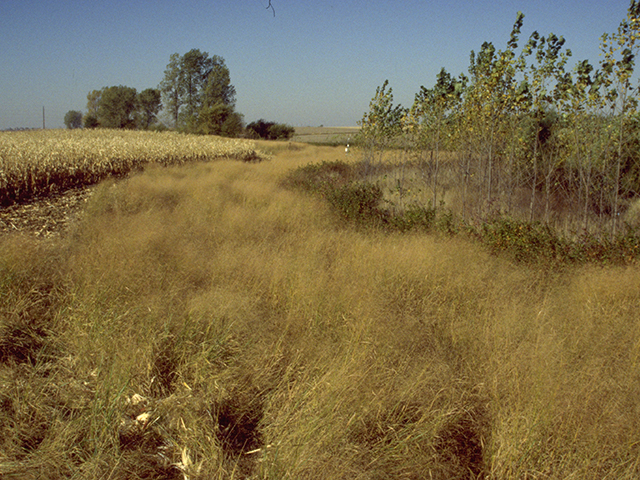Nutrient-Runoff Program Expands in Ohio
More Ohio Farmers to Be Eligible for Conservation Dollars
LINCOLN, Neb. (DTN) -- More farmers in Ohio will be eligible for conservation dollars from the state as part of an expansion of a voluntary program to reduce nutrients runoff into Lake Erie, the state announced this week.
The H2Ohio program is offering state conservation dollars to farmers who implement proven conservation practices to limit phosphorous runoff from fertilizer.
As part of a funding package signed into law by Republican Gov. Mike DeWine, 10 counties have been added to the program, including, Seneca, Huron, Erie, Wyandot, Richland, Shelby, Sandusky, Marion, Ottawa and Crawford counties. The total number of counties in the program is now 24.
H2Ohio was launched in 2019 in response to an algae bloom in Lake Erie that led to Toledo residents being warned not to drink water during a three-day period in August 2014. Questions were raised about the cause of the bloom, and the finger was pointed at nutrient runoff from farms as a culprit.
The state's budget allocates $170 million to the H2Ohio program as part of the 2022-2023 operating budget, including $132 million in new funds.
That includes $100 million for use by the Ohio Department of Agriculture for the farmer incentive program, $50 million for the Ohio Department of Natural Resources for wetlands, and $20 million to the Ohio EPA for drinking water and wastewater projects.
The Ohio General Assembly invested $172 million in the H2Ohio program during the 2020-2021 biennium. The Ohio Department of Agriculture is investing an additional $20 million from its general revenue fund into the H2Ohio program.
For the second consecutive year, the National Oceanic and Atmospheric Administration on June 30 forecast the algae bloom to be smaller than it has in the past decade.
"Our food growers and producers in the western Lake Erie basin want to be part of the solution, as evidenced by the 1,800 farmers who participated in the program's first year," DeWine said in a news release.
P[L1] D[0x0] M[300x250] OOP[F] ADUNIT[] T[]
"By expanding H2Ohio's farmer-incentive program into more counties in the area, we'll continue to slow phosphorus runoff, which will ultimately contribute to a reduction in Lake Erie algal blooms over the long term."
Farmers in the original 14 participating counties, including, Williams, Fulton, Lucas, Defiance, Henry, Wood, Paulding, Putnam, Hancock, Van Wert, Allen, Hardin, Mercer and Auglaize counties, will continue receiving funds during the program's second year. According to the Ohio Department of Agriculture, more than 1 million acres of cropland are already enrolled in the program.
DeWine launched H2Ohio in November 2019 as a long-term, data-driven water-quality plan to reduce algal blooms, improve wastewater infrastructure and to address lead contamination in Ohio.
H2Ohio is an initiative involving the Ohio Department of Agriculture, Ohio Department of Natural Resources, Ohio EPA, Lake Erie Commission and other environmental, agricultural and educational partners.
The plan includes increasing implementation of agricultural best practices and the creation of wetlands, improving wastewater infrastructure, replacing failing home septic systems and preventing lead contamination in high-risk daycare centers and schools.
In July 2019, the Ohio General Assembly approved a two-year, $172 million funding package for water quality and infrastructure.
The state of Iowa in recent years also implemented a voluntary nutrient-reduction strategy. But the plan was widely criticized by environmental interests that wanted the state to mandate conservation practices.
In February 2019, Toledo voters approved a so-called Lake Erie "bill of rights" that empowers Toledo citizens to file lawsuits on behalf of the lake, potentially threatening farmers who operate in states bordering the lake, as well as in Canada.
In March 2019, Custer, Ohio, farmer Mark Drewes filed a lawsuit alleging the measure violates his constitutional rights. A federal judge invalidated the law in April 2020, ruling it to be unconstitutional.
The state has identified 10 best practices for reducing phosphorous runoff. They are soil testing, variable-rate fertilizing, subsurface nutrient application, manure incorporation, conservation crop rotation, cover crops, drainage water management, two-stage ditch construction, edge-of-field buffers and wetlands.
Through a certification process, H2Ohio provides economic incentives to farmers who develop nutrient-management plans that use a combination of the best practices.
As part of the H2Ohio plan, counties in the Maumee River watershed will have localized phosphorus targets to help ensure accountability. Data collected from farmers will be aggregated and made publicly available.
Read more DTN coverage on this issue here:
"Lake Erie Bill of Rights Thrown Out," https://www.dtnpf.com/…
"Group Wants Lake Erie on Pollution Diet," https://www.dtnpf.com/…
"Ohio Plan Targets Phosphorous Runoff," https://www.dtnpf.com/…
Todd Neeley can be reached at todd.neeley@dtn.com
Follow him on Twitter @DTNeeley
(c) Copyright 2021 DTN, LLC. All rights reserved.




